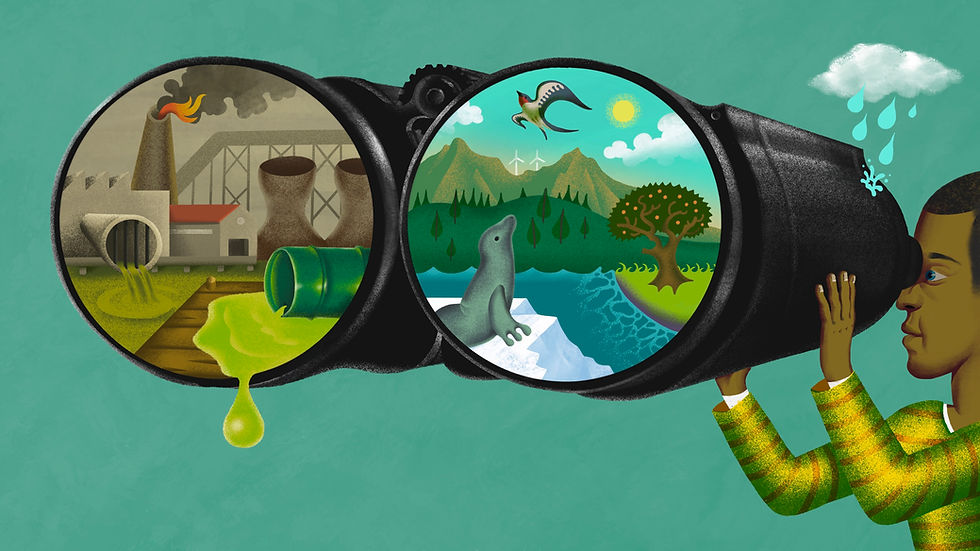Demystifying Biotech: An Introduction to the Field and Its Applications
- Atharva T.
- Nov 24, 2023
- 7 min read
Updated: Dec 23, 2024
In the next few decades, the biotech industry is going to churn out products that will dramatically change the way we live our lives and structure our societies. In a major sense, it already has in the last century. In this blog post, we’re going to introduce you to the field of biotech: What is it, where can it be applied, and how does a biotech company differ from your typical business?

Introduction
Biotechnology is defined as the application of biological systems and living organisms to develop products with the goal of improving the quality of life of humans.
For over a century, there have been significant scientific inventions that have helped to advance this industry. The structure of deoxyribonucleic acids (DNA) was established in 1953 by James Watson, Francis Crick, and Rosalind Franklin. This discovery led to the development of genetic engineering techniques, which appeared in the 1970s. Scientists could alter genes according to their desires via techniques like recombinant DNA. This sparked genetically modified organisms (GMOs) and bio-pharmaceutical production; this was followed by advances in gene sequencing technologies and Polymerase Chain Reaction (PCR) that made it easier and more efficient to analyze DNA. It also promotes research, with myriad applications in diagnosis for biotechnology. Fast forward to more recent years, the development of the CRISPR-Cas9 system, by Jennifer Doudna and Emmanuelle Charpentier, for precise gene editing has allowed scientists to modify genes as if they have a keyboard, deleting (backspace) and inserting (typing) genes.

Healthcare is the fastest-growing industry in the world, and this is partly due to the growth of biotechnology. The current market size was estimated to be $1.37 trillion in 2022 and is expected to grow at a compound annual growth rate (CAGR) of 13.96% from 2023 to 2030 (1). This growth is due to the explosion of applications and the potential of discovery to alleviate current real-world problems such as food security, disease prevention/treatment, and environment conservation. The figure below shows the specific technology in the biotechnology industry and its predicted growth and effect on market size.

Source: grandviewresearch.com,
The Fields of Biotech
Biotechnology encompasses various applications, including agriculture, healthcare, biofuels, eco-friendly materials, therapeutics, and biopharma. The three most common branches of biotechnology are pharmaceuticals, agriculture, and industrial biofuels.
Biology and Pharmaceuticals:
A common confusion point is the difference between biopharma and biotech. Biopharma, or Red Biotechnology, is a subset of biotechnology, which uses living organisms, or biologics to develop products. It is different from traditional pharmaceuticals which use chemical compounds to synthesize products. As aforementioned, disease prevention and treatment are a problem that biotechnology addresses.

Brian Tucker / BioPharma Dive
The freshest example of Red (Biomedicine) Biotechnology is in vaccine development with the SARS-2-COV vaccine. Vaccine production takes anywhere from 15-25 years. Research and Development (RND) of companies spend 2-3 years researching, preclinical testing takes 1 year, clinical testing takes up to 15 years, FDA approval takes 2 years, and manufacturing takes 1-2 years. The combined efforts of the entire world supporting biotechnology companies led to the novel mRNA-based COVID-19 vaccine being developed in 2 years. Advancements in gene therapy are another effect of red biotechnology. The efforts of biotechnology companies have led to innovative gene therapies, such as Luxturna, which treats rare genetic eye diseases by replacing mutated genes with functional ones. Biotechnology has also led to the development of products including recombinant proteins, various hormones, enzymes, cytokines, and monoclonal antibodies. All these products treat tumors by limiting growth, attacking cells, or breaking the uncontrollable growth cycle. (3) Red biotechnology is a rapidly growing field, and day-by-day it seems this sector is one step closer to alleviation of lethal diseases that haunt society,
Biology and Agriculture
The next biotechnology is Green (“Agritech”) Biotechnology. This branch of biotechnology is responsible for everything in the agricultural sector, using living organisms to develop sustainable and environmentally friendly products. Genetically altered plants/crops, in such a way that they are resistant to disease and herbicides, yield impactful results such as, exponentially increasing crop yield, decreasing pesticide/chemical usage, and decreasing greenhouse emissions to an equal degree of removing 8 million cars from the road. (2) An area of green biotechnology not often thought of is its applications in animal breeding and livestock management, utilizing innovative technologies such as artificial insemination (AI), embryo transfer, and molecular DNA markers. (6) These technologies are being utilized to improve animal health by allowing significant genetic improvements for productivity via the usage of recombinant bacteria producing specific enzymes and hormones improving nutrient utilization.

Biology and Industries
The third big branch of biotechnology is White Biotechnology. This branch focuses on improving the industrial production of bio-products using living cells, specifically yeast, fungi, and bacteria, although plants and enzymes are utilized sometimes. Companies are constantly involved in producing sustainable biofuels such as green diesel, a hydrocarbon with a chemical structure like petroleum diesel. Another example is bio-ether, used to reduce greenhouse emissions and society’s reliance on fossil fuels (4). White biotechnology has the potential to reduce the environmental impact of industrial processes. In fact, it is estimated that the use of industrial biotechnology can lead to the reduction of carbon dioxide emissions by as much as 50%, energy consumption by 20% and water consumption by 75% (7). Current research in ongoing in white biotechnology regarding the creation of biomaterials from natural or synthetic polymers that have applications in medicine, agriculture, construction, and electronics (8).

The Business of Biotech
The biotech industry differs from traditional business sectors mainly due to product development, the nature of products, financing challenges, and market dynamics. Biotech companies must rely heavily on patents to defend their ground-breaking intellectual properties (IP). These IPs are acquired through painstaking R&D research, on average taking 14 years to release an approved product to the market (9). IPs introduce market dynamics related to patent exclusivity and the subsequent challenges associated with increased competition when patents expire.
Financing a biotech business over this time frame can be challenging, requiring significant investment and proper management (11). Biotech businesses may find it difficult to secure funding due to the longer development time, which frequently results in higher R&D expenses. Because the biotech industry takes a long time to bring products to market, investors need to be patient and have a long-term view. As a result, profitability may not come for several years. Investopedia.com puts it best stating, “Biotech companies generally have high operating costs because of the research, development, and testing that takes years to complete. The result could be a historic breakthrough or utter failure, bring investors along for the ride” (11). The nature of the products of biotech companies also sets them apart from other businesses; manipulating biological systems and understanding the interactions from a biological perspective requires specialized knowledge and often is complex.
The biotech business is further distinguished by its regulatory environment, with its products subject to intense scrutiny due to their potential influence on human health and the environment. This stringent regulatory environment contributes to a lengthy and uncertain path to market, adding another layer of risk for biotech companies.
The uncertainty in the biotech sector is inherently risky due to the scientific and clinical variability associated with product development. Biotech companies also face challenges in maximizing drug adoption to realize the expected value of their launches (10). No one can tell where the market will go, especially for a sector that is volatile and fast-growing. All of this considered biotech can be considered a risky business.
Biotech in Business: The Rundown
Extensive R&D | Product Development | Intellectual Property Reliance |
|---|---|---|
Patience and Long-Term View | Investors and Funding | Complex Products |
Fast-growing, Volatile Market | Stringent Regulatory Environment | High Operating Costs |
Conclusion
The blend of biology and technology has accelerated scientific advancement in healthcare, agriculture, and industry to previously inconceivable heights.
From the discovery of the structure of DNA to the ground-breaking CRISPR-Cas9 system, biotechnology has handled global issues with astonishing precision. Rapid vaccine development and transformational gene treatments show how red biotechnology is driving healthcare innovation. Green biotechnology transforms agriculture by delivering higher crop yields in genetically modified plants and animals, whilst white biotechnology offers environmentally friendly industrial bioproducts.
However, the biotech business is not without challenges. Because of significant development delays, high prices, and regulatory hurdles, it is a high-stakes enterprise. The intricacy is exacerbated by financial challenges, reliance on patents, and market uncertainties. Despite these obstacles, biotechnology remains a driving force behind new solutions to global concerns.
concerns.
Bibliography
1. Grand View Research . Biotechnology Market Size, Share & Trends Analysis Report By Technology (Nanobiotechnology, DNA Sequencing, Cell-based Assays), By Application (Health, Bioinformatics), By Region, And Segment Forecasts, 2023 - 2030 [Internet]. grandviewresearch.com . grandviewresearch ; 2022 [cited 2023 Nov 23] p. 135. Available from: https://www.grandviewresearch.com/industry-analysis/biotechnology-market
2. Brookes G, Barfoot P. Global impact of biotech crops. GM Crops & Food. 2012 Apr;3(2):129–37.
3. Bush P. Pharmacotherapeutics of Biotechnology-Derived Products. Journal of Pharmacy Practice. 1998 Feb;11(1):54–71.
4. Tylecote A. Biotechnology as a new techno-economic paradigm that will help drive the world economy and mitigate climate change. Research Policy [Internet]. 2019 May;48(4):858–68. Available from: https://www.sciencedirect.com/science/article/abs/pii/S0048733318302336
5. Efbpublic. Green Biotechnology: Ensuring the sustainability of the science [Internet]. EFBPublic.org. 2021. Available from: https://www.efbpublic.org/green-biotechnology-ensuring-the-sustainability-of-the-science/
6. Food and Agriculture Organization of the United Nations . Agricultural Biotechnologies: Livestock [Internet]. www.fao.org. 2010. Available from: https://www.fao.org/biotech/sectoral-overviews/biotech-livestock/en/
7. Barcelos MCS, Lupki FB, Campolina GA, Nelson DL, Molina G. The colors of biotechnology: general overview and developments of white, green and blue areas. FEMS Microbiology Letters. 2018 Sep 25;365(21).
8. Kordi M, Salami R, Bolouri P, Delangiz N, Asgari Lajayer B, van Hullebusch ED. White biotechnology and the production of bio-products. Systems Microbiology and Biomanufacturing. 2022 Jan 17;2(3):413–29.
9. Niedbala C. Biotech Risks - The Numerous Challenges of This Rapidly Developing Sector [Internet]. Founder Shield. 2020. Available from: https://foundershield.com/blog/biotech-risks-the-numerous-challenges-of-this-rapidly-developing-sector/
10. Burns D, Harputlugil E, Salazar P, Sharkey C, Wells C, Wright P. How to successfully launch new biotech products | McKinsey [Internet]. www.mckinsey.com. 2023. Available from: https://www.mckinsey.com/industries/life-sciences/our-insights/making-the-leap-from-r-and-d-to-fully-integrated-biotech-for-first-launch
11. Segal T. Biotech vs. Pharmaceuticals: What’s the Difference? [Internet]. Investopedia. 2020. Available from: https://www.investopedia.com/ask/answers/033115/what-difference-between-biotechnology-company-and-pharmaceutical-company.asp




Comments